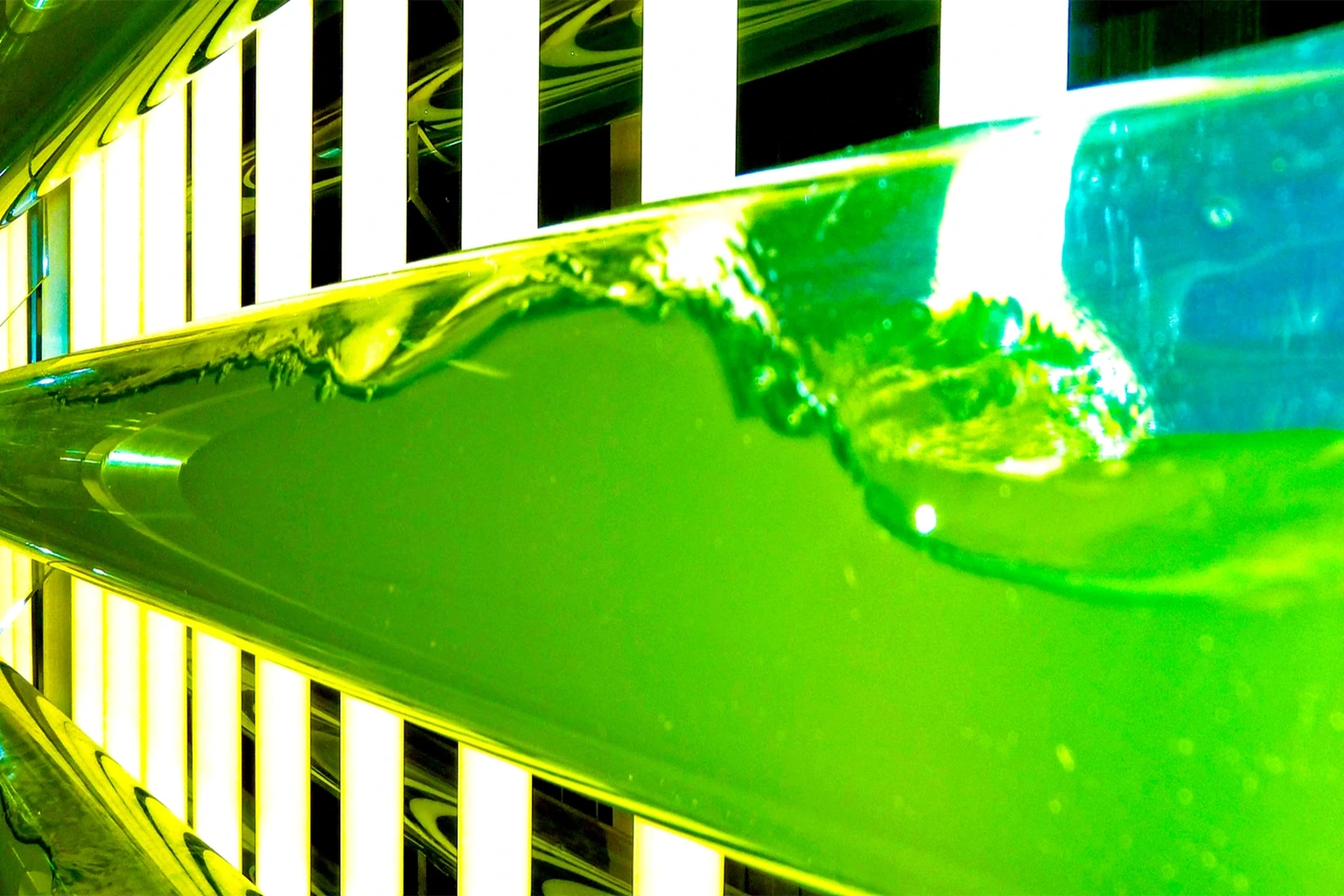In traditional spirulina farming, natural sunlight plays a critical role in enabling photosynthesis. But as more producers explore indoor and urban cultivation, artificial lighting has emerged as an alternative—especially in areas where natural light is inconsistent or unavailable.
But does artificial lighting truly enhance spirulina algae farming, or is it just an energy-draining myth? In this blog, we explore the science behind light and spirulina growth, assess its viability in Indian conditions, and discuss whether the cost justifies the output—particularly when aiming for organic, export-grade spirulina.
Understanding Spirulina’s Relationship with Light
Spirulina is a photosynthetic cyanobacterium, meaning it relies on light to convert carbon dioxide and nutrients into biomass. The quality, intensity, and duration of light exposure directly affect:
- Growth rate and productivity
- Chlorophyll and phycocyanin content
- Nutritional profile (especially protein and carotenoids)
Under optimal conditions, spirulina doubles every 24–48 hours. While natural sunlight is sufficient for most open pond systems, artificial light becomes relevant for indoor farms, pilot labs, and precision research.
→ For more on ideal spirulina parameters, refer to Spirulina Cultivation Best Practices and Techniques
Light Spectrum Requirements for Spirulina
Spirulina responds best to certain wavelengths of light, especially in the blue and red regions of the spectrum:
- Blue Light (430–470 nm): Stimulates protein synthesis and cellular division
- Red Light (630–660 nm): Enhances pigment accumulation (especially phycocyanin)
- Green and Yellow Light: Largely reflected and less effective
Modern artificial lighting solutions like LED grow lights allow for spectrum customization, giving growers the ability to fine-tune conditions for targeted outcomes.
This can be especially useful in closed systems where contamination control and smart agriculture systems are a priority.
Types of Artificial Lighting Used in Spirulina Farming
When natural light is limited or absent, cultivators turn to artificial light sources. Common options include:
✅ LED Grow Lights
- Energy-efficient
- Tunable spectrum
- Low heat output
- Long lifespan (30,000–50,000 hours)
✅ Fluorescent Tubes (T5/T8)
- Affordable and widely available
- Moderate energy consumption
- Less spectral flexibility
✅ High-Intensity Discharge (HID) Lamps
- High light intensity
- More suited for large vertical systems
- High heat output and electricity use
Of these, LEDs are the preferred choice in modern setups due to their energy savings, low heat emission, and controllable light spectrum.
Benefits of Artificial Lighting in Spirulina Algae Farming
Controlled lighting can offer multiple advantages, particularly for indoor or pilot-scale cultivation systems:
- 24/7 growth: Enables round-the-clock production
- Weather-independent: No reliance on sunlight or seasonal shifts
- Higher pigment concentration: Custom spectrum can boost phycocyanin and chlorophyll
- Urban cultivation potential: Makes spirulina viable in rooftop, basement, or lab setups
- Tighter contamination control: Especially useful in pharma or cosmetic-grade production
→ Interested in urban models? Explore Innovative Biotechnology Projects Under ₹1 Million
Limitations and Real-World Constraints
Despite the promise, artificial lighting is not without challenges—especially in large-scale, commercial spirulina farming in India.
⚠️ High Energy Consumption
Artificial lighting increases the farm’s operational cost, particularly when scaled across multiple tanks or ponds.
⚠️ Initial Setup Cost
LED fixtures, drivers, and mounting systems can add significantly to capital expenditure.
⚠️ Organic Certification Limitations
Most USDA and EU Organic certifications emphasize natural processes. Overuse of artificial lighting may disqualify you from premium certifications if not managed carefully.
→ Learn more about compliance in Quality Control in Spirulina Production
Is Artificial Lighting Viable for Indian Spirulina Farms?
For open-air farms in India, where sunlight is abundant year-round, artificial lighting is generally not cost-effective. The spirulina farming cost already includes infrastructure, water treatment, and labor—adding lighting doesn’t justify the ROI for most farms.
However, it may be viable in:
- Controlled lab setups for seed culture
- Pilot plants in urban rooftops
- Farms located in low-light regions or extreme climates
- Indoor R&D and phycocyanin extraction projects
→ For full setup costing, refer to Spirulina Farming Costs and Profits
Energy-Efficient Strategies for Controlled Lighting
If you do decide to use artificial lighting, consider these optimizations:
- Photoperiod Control: Use timers to simulate daylight cycles (16:8 or 18:6)
- Light Positioning: Ensure even distribution and avoid hotspots
- Reflectors and Lenses: Maximize light efficiency inside enclosures
- Smart Controllers: Use sensors to dim or change spectra based on culture feedback
Combining artificial lighting with farm automation and IoT can improve results while minimizing energy waste.
→ Dive deeper into smart upgrades in Automation in Spirulina Farming
Government Schemes for Indoor Spirulina Projects
While most government subsidy schemes for farmers focus on open-farm infrastructure, some grants under PMFME or Digital Agriculture Missions support innovative indoor and tech-integrated spirulina setups.
You may qualify for:
- Subsidies on solar-powered lighting
- R&D grants through Startup India
- Agri-incubator funding for urban spirulina models
- NABARD schemes for energy-saving equipment
→ Explore more options in Government Grants and Subsidies for Spirulina Farming
Final Verdict – When Should You Use Artificial Lighting?
Use it when:
✅ You’re operating in enclosed or urban environments
✅ Light consistency is critical for pharma/cosmetic-grade spirulina
✅ You’re doing strain improvement or pigment optimization
✅ You want to pilot a niche or year-round model
Avoid it when:
❌ You have consistent sunlight availability
❌ You aim to reduce operating costs
❌ You’re targeting USDA/EU Organic buyers
❌ You’re focused on volume over precision
For most spirulina farms in India, artificial lighting is better reserved for niche use cases—not mainstream cultivation.
Conclusion: Lighting the Future of Controlled Spirulina Farming
Artificial lighting in spirulina cultivation opens new doors—especially for controlled, tech-driven environments. When used strategically, it enables precision, consistency, and pigment optimization. However, it also brings higher costs and energy dependence.
The decision to implement artificial lighting must be tied to your farm’s goals—whether you’re building an export-focused biotech facility or aiming for low-cost, open-air production.
👉 Need expert advice on lighting, automation, or hybrid spirulina systems?
Contact us at Greenbubble for turnkey farm planning, equipment sourcing, and certified production solutions tailored to your budget and climate.


